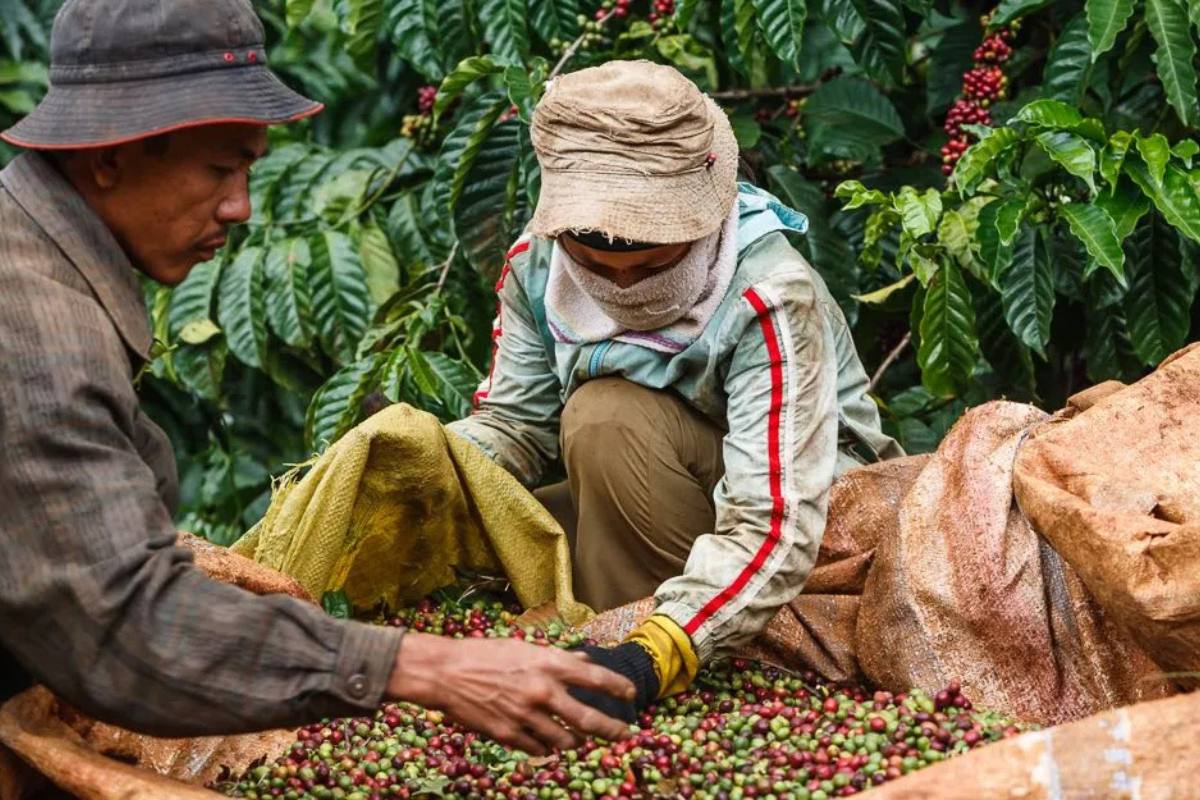Vietnam is the second-largest coffee producer in the world, with a reputation strongly rooted in its cultivation of Robusta beans, which account for over 90% of its national production. This Southeast Asian nation plays a pivotal role in the global coffee trade, known not only for quantity but also for its evolving quality and unique coffee traditions.
1. A Rich History and Thriving Heritage
Coffee was introduced to Vietnam by French colonists in 1857, but it wasn’t until the 1930s that commercial plantations began to take hold, particularly in the Central Highlands. With the economic reforms known as Doi Moi in the late 1980s, Vietnam’s coffee industry experienced rapid expansion. Today, Buôn Ma Thuột in Đắk Lắk province is widely recognized as the coffee capital of Vietnam, home to thousands of hectares of coffee trees and hundreds of thousands of workers tied to this vital industry.
2. Types of Beans: Robusta, Arabica & More
Robusta dominates Vietnam’s coffee landscape. Known for its bold, earthy flavor and high caffeine content, it’s a staple in many traditional Vietnamese drinks. Although Robusta leads production, smaller quantities of Arabica are cultivated in higher altitudes like Da Lat, producing more delicate, floral profiles. Other beans such as Liberica and Excelsa also grow in limited regions. Specialty varieties like weasel coffee (civet-processed beans) add a unique, luxurious aspect to Vietnam’s coffee identity, attracting tourists and niche markets.
3. Distinctive Flavors and Brewing
Vietnamese coffee is famous for its rich, intense flavors, often enhanced by dark roasting. Traditional drinks include cà phê đá (iced black coffee) and cà phê sữa đá (iced coffee with condensed milk), which are daily staples throughout the country. Creative local drinks like egg coffee (cà phê trứng), coconut coffee, and pandan-flavored variations add diversity to the brewing culture. The iconic phin filter method—a slow drip brew—enhances the flavor profile and offers a relaxing, ritualistic coffee experience. These drinks reflect both innovation and cultural heritage.
4. Processing & Quality Control
Coffee harvesting in Vietnam is predominantly manual, ensuring the selection of ripe cherries. Three main processing methods are used: natural (dry), washed, and honey (semi-washed), each influencing the coffee’s sweetness and clarity. Traditional Vietnamese roasting tends to favor dark profiles, although a shift toward medium and light roasts is emerging among specialty roasters who aim to highlight more nuanced flavor notes.
5. Sustainability & Market Position
Coffee plays a crucial role in Vietnam’s economy, providing employment for millions and ranking as the second most valuable agricultural export after rice. However, environmental concerns such as climate change, water scarcity, and soil degradation pose challenges. Sustainable farming practices, certifications like Fair Trade, Rainforest Alliance, and eco-conscious farming are being adopted to improve coffee quality and ensure long-term productivity. Government initiatives and training programs are also helping farmers adopt better cultivation and post-harvest techniques.
6. Unique Styles & Regional Profiles
- Buôn Ma Thuột: Located in the Central Highlands, this area is known for its volcanic soil and ideal conditions for growing robust Robusta beans. The flavor tends to be heavy-bodied, with chocolate and nutty notes.
- Da Lat: Known for its cool, high-altitude climate, Da Lat is a prime region for Arabica production and is increasingly featured in specialty coffee markets worldwide.
- Exotic coffees: Vietnam also produces kopi luwak (weasel coffee) and elephant coffee, catering to niche, high-end consumers seeking rare and premium brews.
7. Global Reach & Trendsetting
Vietnam exports millions of tons of coffee annually, securing a prominent place in global trade. Recently, there has been a growing appreciation for Vietnamese Robusta in the specialty coffee scene, challenging the dominance of Arabica beans. International cafes are also adopting Vietnamese brewing methods and flavors, helping spread its cultural significance worldwide. Phin filter coffee and egg coffee, once local delicacies, are now becoming international café staples.
Why Vietnamese Coffee Stands Out
| Feature | Impact |
|---|---|
| High caffeine | Strong, energizing effects |
| Bold flavor | Notes of chocolate, nuts, and spice |
| Cultural uniqueness | Phin brewing, sweetened condensed milk |
| Wide variety of drinks | From egg coffee to coconut creations |
The Unique Essence of Vietnamese Coffee
Vietnam’s coffee culture is an extraordinary blend of tradition, resilience, and innovation. From the vast plantations in Đắk Lắk to the highlands of Da Lat, each region contributes to the nation’s dynamic coffee profile. Its distinct methods and bold flavors not only satisfy domestic taste but also continue to impress on the global stage—making Vietnam a vital player in the world of coffee. For coffee lovers and digital publishers alike, Vietnamese coffee offers rich stories, sensory depth, and growing international appeal.
